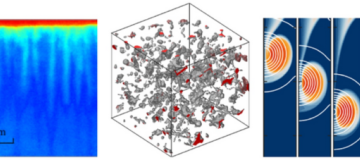
Seminar - Porous material in geological processes: From physical principles to applications
Speaker: Marc A. Hesse Department of Geological Sciences - University of Texas, Austin | Thursday 14 December 2023 – ore 4,30 PM | Arduino classroom
14.12.2023
Most geological materials are porous and the dynamics of flow, deformation, and reactions in porous media control energy and mass transport in many geological and environmental processes. I will give an overview of three projects that show case fundamental porous media research and its application to the Earth and Planetary Sciences.
Geological Carbon Storage (GCS) is an important negative emissions technology, but basic questions about the storage security have to be addressed. Carbon dioxide (CO2) can be trapped in the subsurface by dissolution into the brine, which increases the brine density sequesters the CO2 at depth. The rate of CO2 dissolution is therefore critical to storage security. I will present results estimating CO2 dissolution rates in natural CO2 accumulations and laboratory studies determining the physical controls of dissolution rates. Permeability of salt is generally thought to be negligible and salt forms important traps for hydrocarbons and is chosen for nuclear waste repositories.
However, there has long been evidence for fluid transport through salt on the basin scale. I will present laboratory experiments imaged with CT-scanning that demonstrate that brines enter the salt grain boundaries at elevated pressure and temperature to form a connected pore network. These experimentally derived conditions for salt permeability are shown to predict the presence of fluids hydrocarbon exploration wells in the Gulf of Mexico. Our work suggest that salt may act a s a fluid conduit at depth and may control sub-salt fluid pore pressures.
Habitability of icy moons in the outer solar system has become the major question in solar system exploration, since the discovery of tidally heated internal oceans in the moons of Jupiter and Saturn by the Galileo and Cassini spacecrafts. We now know that there is more liquid water in the outer solar system than on Earth and the habitability of these large internal oceans will be studies by three upcoming flagship mission: JUICE (ESA), Europa Clipper and Dragonfly (NASA). A first order question is the avialability of redox gradients to chemosyntactic life in these oceans. I will present modelling results for the transport of surface-generated oxidant through the ice shell of these icy moons by porous drainage and viscous foundering of impact generated melts.





